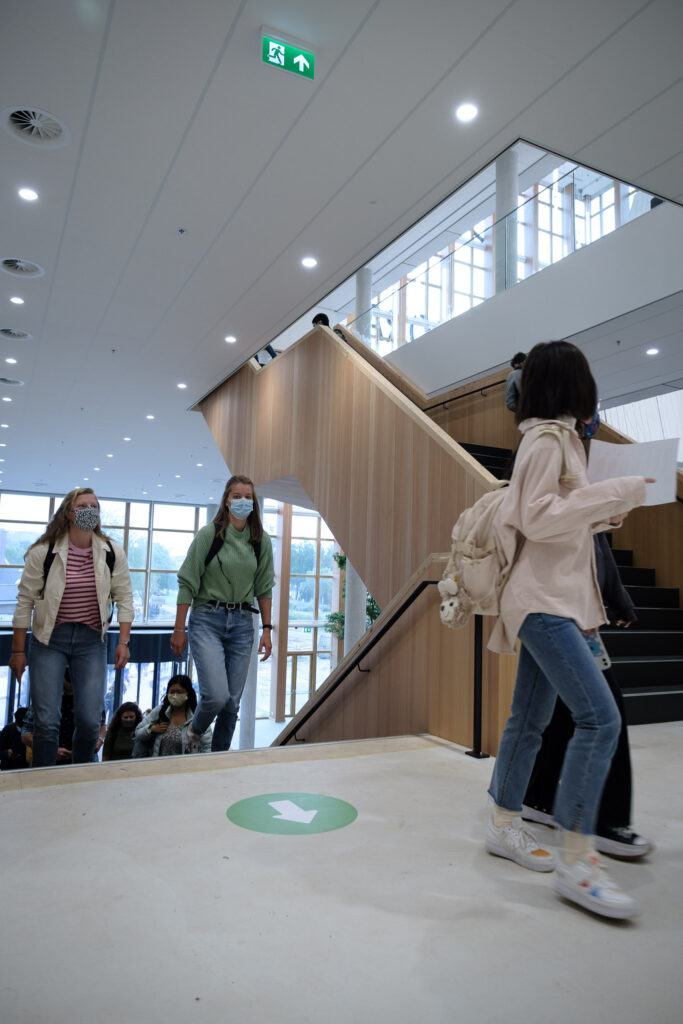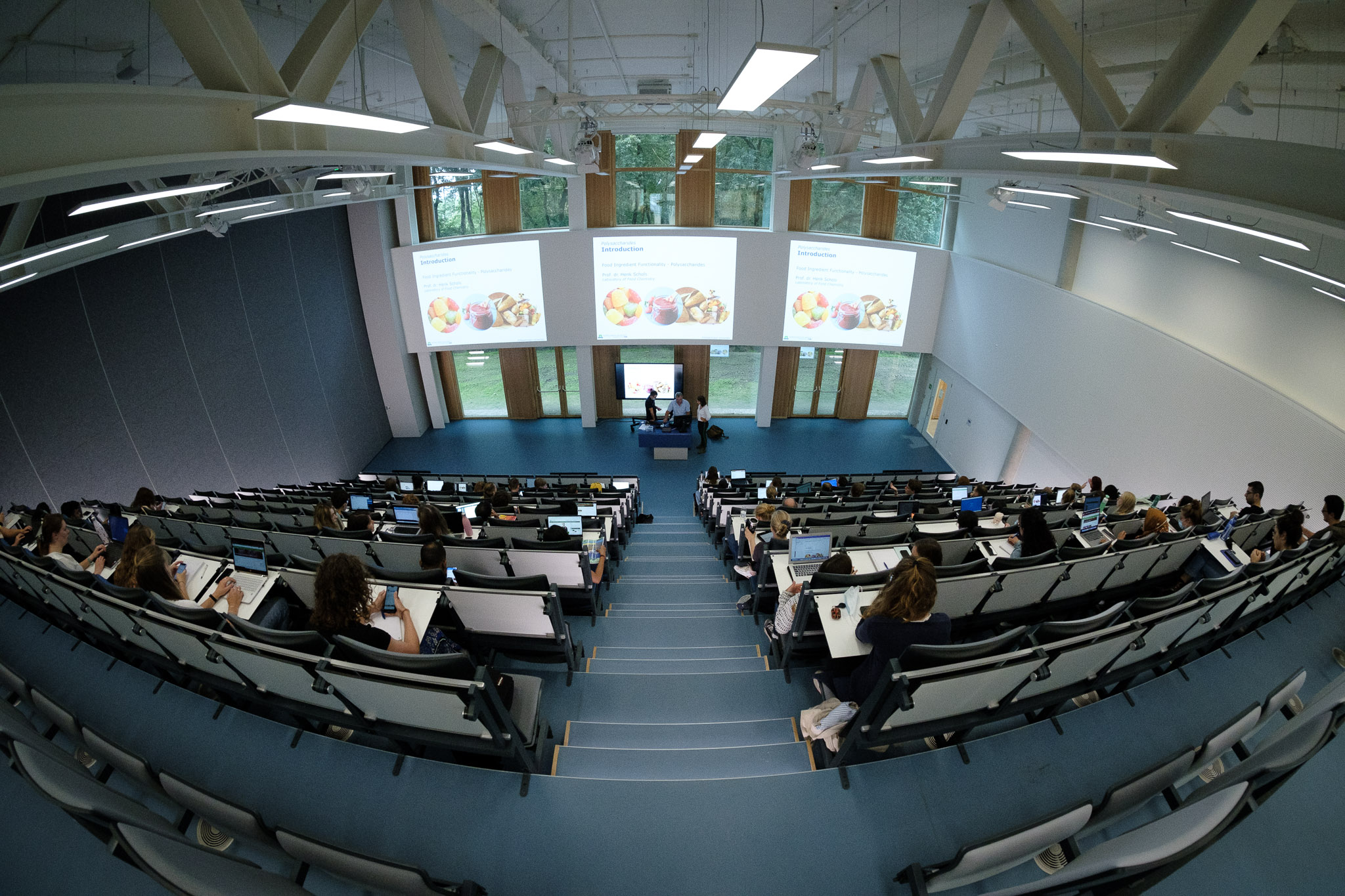The most recent corona measures restrict the number of students per (class) room to 75. For 95% of the courses, everything remains the same, says Dean of Education Arnold Bregt. Even for the larger courses, the impact is limited. ‘The effect for Wageningen University is quite okay’, Bregt says.
Some lecture rooms have been fitted with dividing walls, which split them into rooms for fewer than 75 students. Some courses have switched rooms so that the lecture can be recorded on video. And then there are courses with more than 75 participants, but where fewer show up because some prefer to follow the class online.
Three lecturers of large courses explain how their course is affected by the maximum:
Carolien de Kovel, Advanced Statistics lecturer: ‘Although about 100 students are registered for the course, fewer than 75 show up, so we did not have to make any adjustments. The practicals are scheduled in smaller groups. When there was a temporary maximum installed at the beginning of this year while we had larger groups, we allowed students to register through Brightspace, but luckily, that is not necessary now, as it does increase the threshold.’
Raymond Staals, Applied Molecular Microbiology lecturer: ‘There are many registrations this year, some 145. I impressed upon the students from the start that they are free to follow the course online. The lectures are broadcast live and posted on Brightspace afterwards. Some students prefer to follow the lectures online, and some feel more comfortable because they fear getting infected. This, in combination with the natural decline -during a course, the number of students that attend classes drops – resulted in fewer than 75 students attending the lectures. Last Monday, we had 72 students in the lecture room. I am happy that we are able to teach safely without any strict measures.’
Text continues below.

Ingrid Lubbers, Introduction to Soil Geography lecturer: ‘During the scheduling, we also faced a maximum group size of 75 students. So, we already had a system in place where students were required to register in order to be present during class. The remainder of the students follows the class online through Teams. One teacher delivers the lecture, while another moderates the chat. When the group cap was lifted at the end of September, we sought a larger lecture room. Occasionally we were able to get one, which allowed us to have 236 of the approximately 250 registered students in the classroom at the same time. For those occasions, we must now place a dividing wall once again. For the remainder, everything will remain in hybrid form, which means that each lecture can be viewed through weblectures. Fortunately, we do not have to adjust much with regard to practicals. There is only one that we will have to offer in a hybrid setup. Except for the fact that this is a time-consuming logistical challenge, I don’t expect it to cause any issues.’

 Lecture in Aurora. Photo Guy Ackermans
Lecture in Aurora. Photo Guy Ackermans 

